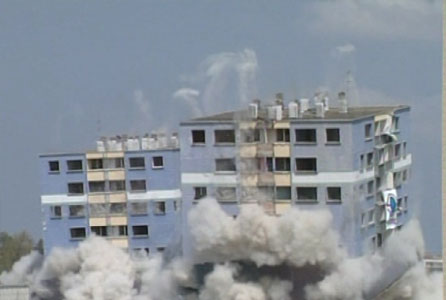
Demolition Definition
Demolition is known as the act of wrecking, razing, destructing, demolishing, and any other word that you could think of to describe things involved in the process of deconstruction. In a sense, you could look at demolition as being the exact opposite of construction, seeing as how instead of building from the ground up, you begin destruction projects from the top and work down. Demolition is generally performed due to unstable environments (buildings) and very often clear the way for a new building to be built in the same area. One of the most important factors during a demolition project is always the safety of the workers, the neighboring buildings and the surrounding public in addition to the safety of the environment as well. Safety is of primary concern from the start to the end of a demolition project.
How is Demolition Performed?
At first thought, most people think of huge explosions when they think of a demolition. Many times, a demolition company will make use of a series of explosives that are connected via a firing line or the explosives are connected in some way or another so that they can be detonated in a special order to cause the building to collapse in the most appropriate way. The point behind using explosives is to target certain areas of the building so that when the explosives are detonated, the building will collapse with ease from the structural elements becoming weak.
However, explosives aren’t always used. In fact, it is very often that large, heavy machinery is used to tear down a building or structure that has become unstable. Some buildings (generally smaller structures) require a crane to be used while some buildings (usually very large buildings) will even require that wrecking balls be used. Wrecking balls are connected to a crane by a cable and are operated to swing back and forth by the crane operator.
Preliminary Work
Aside from doing every up to code and by law, demolition companies and/or contractors will remove anything from the building that can be recycled or that can be salvaged (meaning it is of value still). This could include anything from copper wire to furnishings. In addition, the building will be surveyed for anything that may pose to be a safety concern including but not limited to:
- Unstable Walls.
- Glass.
- Lead Paint.
- Asbestos.
Job Site Clean Up
Most demolition jobs will require that the work site be cleared immediately following the destruction of the building. This is very time consuming and could be dangerous as there will be debris lying around everywhere. The debris will need to be loaded into the proper transportation and then transported to the appropriate outlets. The job site needs to be completely free from any debris and entirely clean. The reason for this is because more than likely, the building was being torn down so that new construction could begin soon after the demolition project ended – and that, my friend, begins an entirely new process and description.
